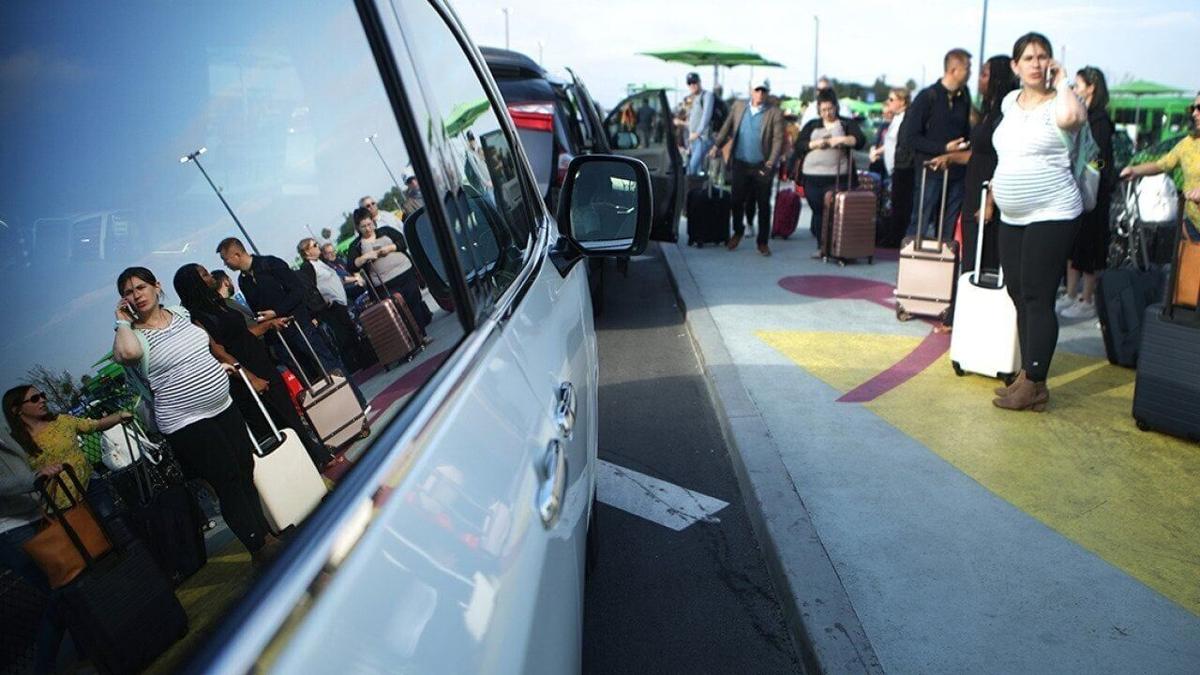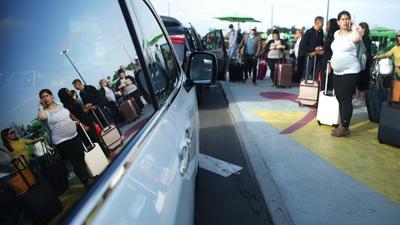![]()
UberŌĆÖs new shuttles look suspiciously familiar to anyone whoŌĆÖs taken a bus
Every few years, a Silicon Valley gig-economy company announces a ŌĆ£disruptiveŌĆØ innovation that looks a whole lot like a bus. Uber rolled out Smart Routes a decade ago, followed a short time later by the Lyft Shuttle of its biggest competitor. Even Elon Musk gave it a try in 2018 with the ŌĆ£urban loop systemŌĆØ that never quite materialized . And does anyone remember Chariot?
Now itŌĆÖs UberŌĆÖs turn again. The ride-hailing company recently announced , in which shuttles will travel dozens of fixed routes, with fixed stops, picking up passengers and dropping them off at fixed times. Amid the inevitable jokes about Silicon Valley once again discovering buses are serious questions about what this will mean for struggling transit systems, air quality, and congestion.
People are also reading…
Uber promised the program, which rolled out in seven cities at the end of May, will bring ŌĆ£more affordable, more predictableŌĆØ transportation during peak commuting hours.
ŌĆ£Many of our users, they live in generally the same area, they work in generally the same area, and they commute at the same time,ŌĆØ Sachin Kansal, the companyŌĆÖs chief product officer, said during the companyŌĆÖs May 14 announcement. ŌĆ£The concept of Route Share is not new,ŌĆØ he admittedŌĆöthough he never used the word ŌĆ£bus.ŌĆØ Instead, pictures of horse-drawn buggies, rickshaws, and pedicabs appeared onscreen, reports.
CEO Dara Khosrowshahi was a bit more forthcoming when the whole thing is ŌĆ£to some extent inspired by the bus.ŌĆØ The goal, he said, ŌĆ£is just to reduce prices to the consumer and then help with congestion and the environment.ŌĆØ
But Kevin Shen, who studies this sort of thing at the Union of Concerned Scientists, questions whether UberŌĆÖs ŌĆ£next-gen busŌĆØ will do much for commuters or the climate. ŌĆ£Everybody will say, ŌĆśSilicon ValleyŌĆÖs reinventing the bus again,ŌĆÖŌĆØ Shen said. ŌĆ£But itŌĆÖs more like theyŌĆÖre reinventing a worse bus.ŌĆØ
Five years ago, the Union of Concerned Scientists released a that found ride-share services emit 69 percent more planet-warming carbon dioxide and other pollutants than the trips they displaceŌĆölargely because as many as 40 percent of the miles traveled by Uber and Lyft drivers are driven without a passenger, something called ŌĆ£deadheading.ŌĆØ That climate disadvantage decreases with pooled services like UberX ShareŌĆöbut itŌĆÖs still not much greener than owning and driving a vehicle, the report noted, unless .
Beyond the iffy climate benefit lie broader concerns about what this means for the transit systems in New York, San Francisco, Chicago, Philadelphia, Dallas, Boston, and BaltimoreŌĆöand the people who rely on them.
ŌĆ£Transit is a public service, so a transit agencyŌĆÖs goal is to serve all of its customers, whether theyŌĆÖre rich or poor, whether itŌĆÖs the maximum profit-inducing route or not,ŌĆØ Shen said. The entities that do all of this come with accountability mechanismsŌĆöboards, public meetings, vocal ridersŌĆöto ensure they do what theyŌĆÖre supposed to. ŌĆ£Barely any of that is in place for Uber.ŌĆØ This, he said, is a pivot toward a public-transit model .
Compounding the threat, Philadelphia and Dallas have struggling transit systems at risk of defunding. The situation is so dire in Philly that it may cut service by nearly 45 percent on July 1 amid a chronic financial crisis. That, as one Reddit user pointed out, .
Meanwhile, the federal government is cutting support for public services, ŌĆömany of which still havenŌĆÖt fully recovered from COVID-19-era budget crunches. Though ridership nationwide is up to , Bloomberg News recently estimated that transit systems across the country face a . So itŌĆÖs easy to see why companies like Uber see a business opportunity in public transit.
Khosrowshahi insists Uber is ŌĆ£in competition with personal car ownership,ŌĆØ not public transportation. ŌĆ£Public transport is a teammate,ŌĆØ he told The Verge. But a 2024 released by the University of California, Davis found that in three California cities, over half of all ride-hailing trips didnŌĆÖt replace personal cars, they replaced more , like walking, public transportation, and bicycling.
And then thereŌĆÖs the fact cities like New York grapple with and donŌĆÖt need more vehicles cluttering crowded streets. During UberŌĆÖs big announcement, Kansal showed a video of one possible Route Share ride in the Big Apple. It covered about 3 miles from Midtown to Lower Manhattan, which would take about 30 minutes and cost $13.
But hereŌĆÖs the thing: The addresses are served by three different subway lines. It is possible to commute between those two points, avoid congestion, and arrive sooner, for $2.90. So, yes, Uber Route Share is cheaper than UberŌĆÖs standard car serviceŌĆöŌĆöbut Route Share is far from the most efficient or economical way to get around in the biggest markets itŌĆÖs launching in.
ŌĆ£If anything,ŌĆØ Shen said, ŌĆ£itŌĆÖs reducing transit efficiency by gumming up those same routes with even more vehicles.ŌĆØ
was produced by and reviewed and distributed by .


















